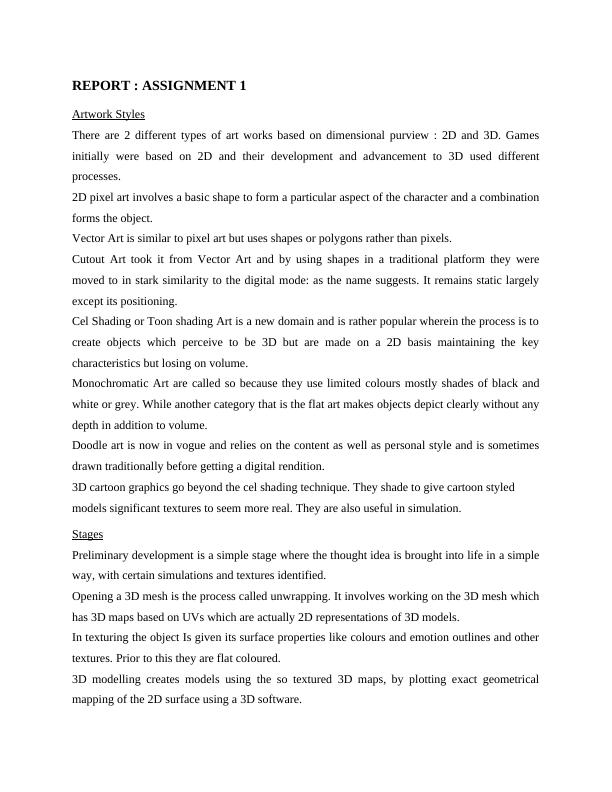Artwork Styles and Stages in 2D and 3D Art
7 Pages959 Words76 Views
Added on 2023-01-05
About This Document
This report explores different artwork styles in 2D and 3D art, including pixel art, vector art, cutout art, cel shading, monochromatic art, and doodle art. It also discusses the stages of art development, such as preliminary development, unwrapping, texturing, 3D modeling, and animation. The report compares digital art with traditional methods and highlights the benefits of each. References to books and web content are provided for further reading.
Artwork Styles and Stages in 2D and 3D Art
Added on 2023-01-05
ShareRelated Documents
End of preview
Want to access all the pages? Upload your documents or become a member.



